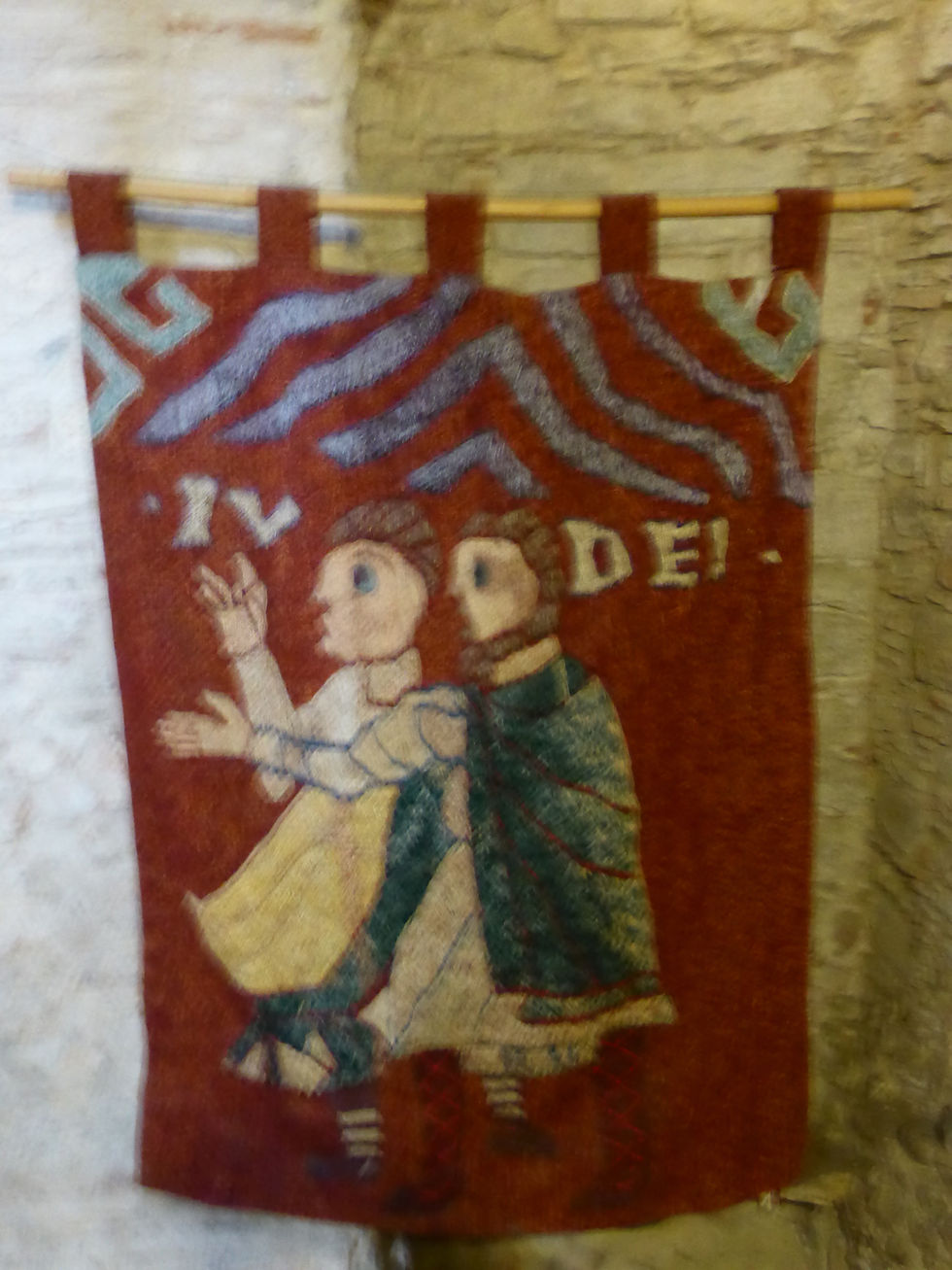Portugal, France, Spain- a New Story
Nearly a year ago, a fourteen-year-old embroideress from Portugal in the early 17th century took up residence in the deep reservoir of book ideas living in my brain. She demanded to be written about. As many of you know, my first two books, Even in Darkness, 2015, and Hard Cider, hopefully 2018, have their bases more or less in family stories and themes from my own life. But this girl, currently named Isabel, was a complete stranger.
All I knew about Portugal is what I learned on a cycling trip from Lisbon to Grenada six years ago. I fell in love with the dry quaint landscapes, the cork forests and olive groves, the flowering almond trees, and the beautiful villages steeped in history. I saw remnants of a Jewish pre-Inquisition presence in those remote villages.

I knew one more thing about Portugal- my maternal great grandmother's family of origin, the Jessuruns had allegedly come from somewhere in this lovely country. So, when Isabel started to make her presence known in my imagination, I began a deeper investigation of my ancestry, registering for genealogical websites, and building a family tree. Many diversions later, I traced my branch of the Jessurun family back to Abraham Jessurun, born in Abrantes, Portugal in 1585, and migrating to Hamburg, Germany, where he died in 1656. He was, (count them) my ninth great grandfather. The expulsion of the Jews from Spain happened in 1492 (while Columbus sailed the ocean blue), and thousands of Jews fled over the Spanish border to Portugal, where Jewish populations, especially in border towns, nearly tripled. Even though the Inquisition followed these emigrants to Portugal, it took nearly 100 years to eradicate the Jews from the remote areas of Alentejo, and central Portugal where my family lived.
In some towns, like Belmonte, a pocket of the Jewish population practiced their religion covertly, and were only nominally "New Christians." They converted to Christianity only to protect themselves, and knowingly practiced Judaism secretly. In contrast, others, sometimes called Meranos, practiced inheretied Jewish customs without any religious association. When the stars aligned, and I had the opportunity to travel back to Portugal, and visit with friends in France and Spain, I decided to do some on-site research, to see if I could connect the dots between the imaginary character Isabel, my own family's history, and the landscapes of Portugal, northern Spain and southern France. I wanted to trace the routes that might have constituted the early part of a young woman's journey to Germany to escape persecution in the beginning of the 17th century.

Before arriving in Portugal I'd tried out the following ideas about my main character. Her name- Isabel do Castro Jessurun, based on some family names, a favorite patron saint from Estremoz, and a favorite young lady of my acquaintance. (Problem one- Isabel will be a crypto Jew- will she know she's Jewish?). Isabel's mother will have died. Perhaps Isabel goes to find her father in Hamburg. There will be an older woman who helps Isabel along her way- a mystic who may come from Catalonia in Spain with skills as an herbalist. The poems of Rumi may make an appearance. The story will be one of coming of age, of faith, of making huge changes, and of making art.
As a lover of the serendipitous, two occurrences in Portugal seemed catalytic to my project in the making. The first happened on our second day, when we were in the midst of a guided tour of Lisbon. Our guide mentioned that a synagogue had re-opened in Lisbon, but could only be visited with a prior appointment, which we hadn't known to arrange. She offered to walk us by the gated stone wall which hid the building from view. (Most synagogues in European cities are shut away behind walls hidden from view and are not open to the public because of fears of terrorist attacks, graffiti and other forms of harassment). Just as we approached, them gate opened to receive another guide there on business, and when we asked if we could enter, the guard deferred to a small elegant woman, who liked the looks of us enough to let us in. She spoke limited English but was able to give us the basic information about the tiny congregation, its lovely 100 year old building, the tenuous state of the Lisbon Jewish community, and permission for us to explore the lovely sanctuary, and the garden wall with the names of supporting families forged like sculptures in the courtyard.). I failed to get the woman’s name, but Barry got this lovely photo.


I've already reached out to the community website, in the hopes someone will put me back in touch with that woman who went out her way at the beginning of our odyssey, to make us feel entirely at home.
The second magical connection occurred as we got to know our guide for the last four days of our time in Portugal- Jose. His specialty as an historian is military fortifications, but we'd asked for the opportunity to learn as much as possible about the Jewish history of Portugal, and particularly around Abrantes. He undertook to study each evening we were there, to discover more in depth than what he already knew, and furthermore put me in touch with a local university professor with whom I've now had email exchanges. They deepened my understanding of the role embroidery played in the lives of young Jewish girls in 17th century Portugal, and provided further resources for me to read and contact.


And so it begins- a weaving of stories and histories and a profound sense of place. In my next blogpost there are more of the photos that speak to me of Isabel's journey... hmm.. a working title? Enjoy!







































